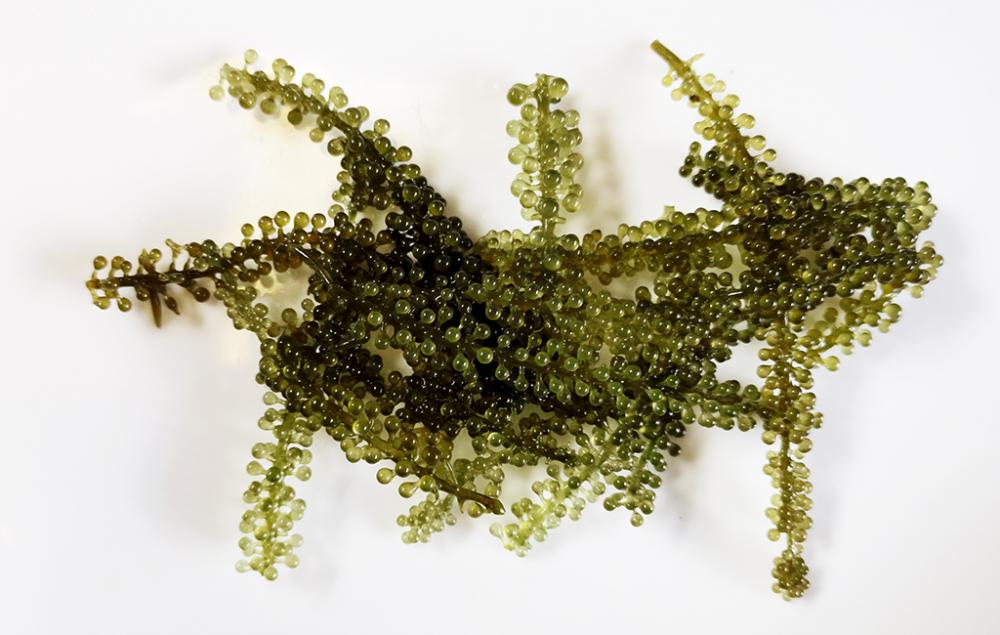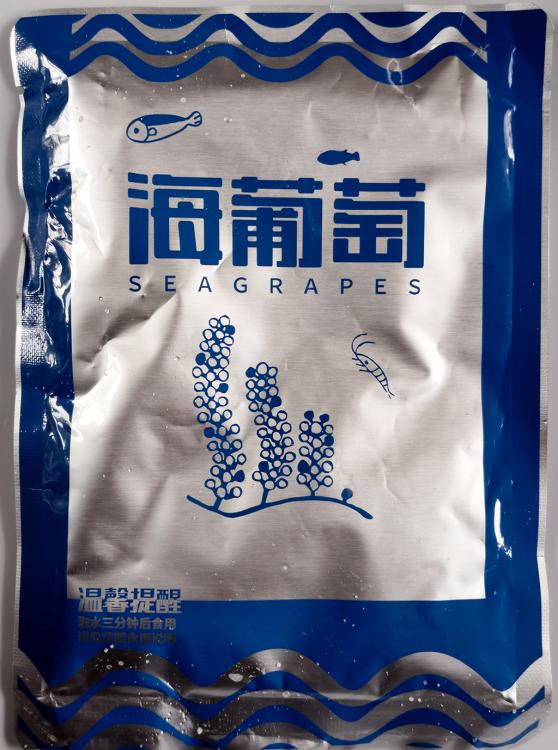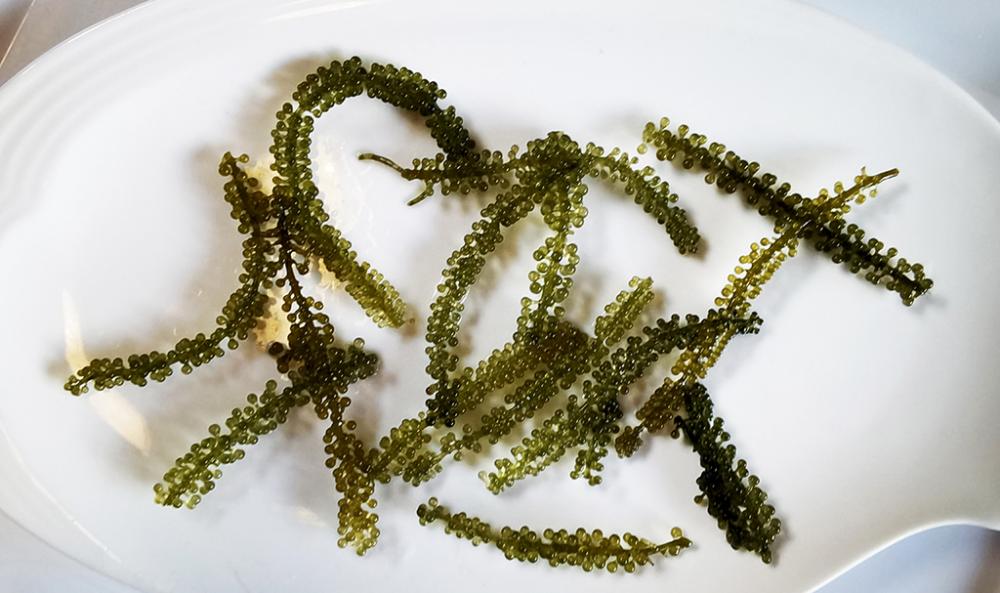23. 海葡萄 (hǎi pú tao), Sea Grapes, Caulerpa lentillifera
Also known as Green Caviar in English, this is a type of seaweed or algae. It was first cultivated in the 1950s in Cebu in the Philppines after it was accidentally introduced to fish ponds. By 1986, it had reached Japan, before being cultivated in Vietnam and China. This lot came from Vietnam.
The seaweed is washed and then brined in a sea-strength solution. This is how I bought it.
It is then drained and soaked in cold, fresh water for three minutes and it's ready to eat. At room temperature. It does not react well to either heat or cold.
It tastes of the sea, as you would expect, and has a delicate grassy flavour. But the most important quailty it has is the texture. It is crisp and the bubbles pop audibly in the mouth, like popping candy.







